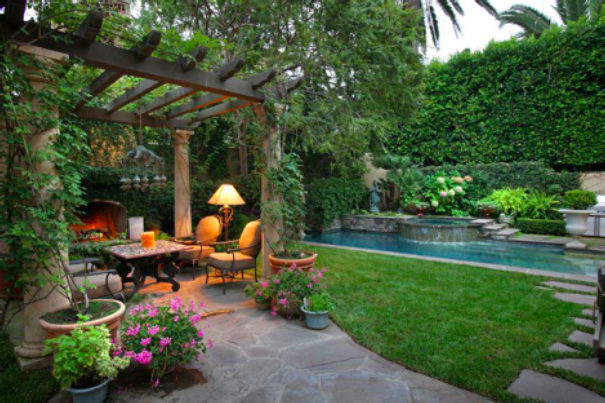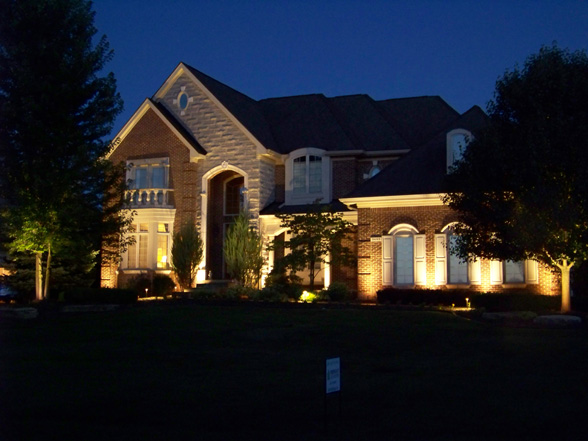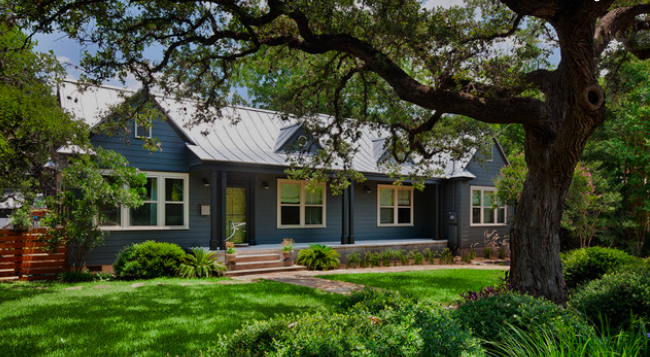
Take Back Your Summer With Our Custom Landscaping Services
April 22, 2022
6 Benefits of Landscape Lighting
May 9, 2022Adding a shade tree to your landscape is a smart decision, but it isn’t always a simple one. While any tree can provide some level of shade, some species are better at sheltering you from the sun than others. And it isn’t all about shade ability – the right shade tree should also add beauty to your landscape and bring value to your home or business. Plus, planting a tree is a permanent investment – or, if you choose the wrong one, a permanent mistake.
With thousands of species to choose from in South Alabama, finding the perfect shade tree can feel like a tall order. But you don’t have to let shade tree stress keep you sweating it out in the South Alabama sun! We’ve got a few strategies that can help bring the struggle of choosing a shade tree down to size.
1. Create specific shade goals.
Shade is the obvious goal, but it helps to get more specific if you want the perfect shade tree. Ask yourself what you want your shade tree to accomplish. Do you want a comfortable outdoor space away from the sun? Are you hoping to cool your home or lower your energy bills? Will your tree help create privacy or protect against runoff and erosion?
Knowing exactly what purpose(s) your shade tree will serve can help you choose the right tree for the job.
2. Size up the space.
Next, study the space where your shade tree will stand. Do you have plenty of available space in all directions? Do you need to account for any nearby structures like homes, buildings, fences or utility lines?
Remember to think in terms of a mature shade tree – what starts as a tiny seedling can quickly grow well over 80 feet tall and 60 feet wide. Research the expected size of your preferred shade tree and be sure you have enough space for every inch of full growth. Don’t forget to factor in mature root systems, which can sometimes spread over three times the diameter of a tree’s canopy.
3. Consider growing conditions.
The best (and easiest) shade trees for your property are ones that will thrive in your local growing conditions. Before getting your heart set on a specific species of shade tree, consider the following:
- Your USDA growing zone. If you live in South Alabama, stick with species that thrive in zone 8 to be sure they are hearty enough for our high temperatures and humidity.
- Conduct a soil test to determine the soil type, drainage, and pH level of your planting site. Ideally, you want soil that is well-drained, has a neutral pH, and is loamy in texture, but some species can thrive in other soil conditions. Follow the recommendations to make adjustments or choose a species suited to your existing soil.
- Sunlight exposure. Full sunlight is preferred for most trees, but some species are tolerant of partial sunlight or even dappled shade. Most tree seedlings have tags that give information on ideal sunlight exposure.
4. Decide between deciduous and evergreen trees.
Shade trees can be deciduous or evergreen in nature. The main difference between them is that deciduous trees shed their leaves in the fall while evergreen trees remain green year-round. Deciduous trees are best for spring and summer shade because they have wide canopies that create large, cool areas underneath. Evergreen trees can provide shade year-round, but that also means you’re sheltered from any winter sunlight.
5. Think about color and shape.
Like all plants, shade trees come in a variety of shapes and colors. Think about your preferences and what will best complement your landscape design. Do you prefer beautiful spring blooms or bold fall foliage? Do you like thick, waxy leaves or fine green needles? Will a tall canopy create striking contrast or will it just look out of place in your landscape?
6. Factor in growth rate.
Some shade trees grow faster than others. If you need shade quickly, consider a fast-growing species like red maple, sweetgum or tulip poplar. But keep in mind that these types of trees have shorter lifespans than slow-growing species like oak trees, which take longer to mature but can last for hundreds of years.
7. Keep maintenance in mind.
Be realistic about how much maintenance you want to do. If you don’t enjoy raking, avoid choosing a tree that sheds blossoms in spring or leaves in the fall. Also keep tree trimming in mind – the taller the tree, the harder it is to trim and prune properly.
If you’re still struggling to choose a shade tree, contact Chad’s Landscape Management! Our team can walk you through the best shade trees for our area and help you choose a species that suits your needs. We’ll even plant it for you and handle all the routine maintenance so you can enjoy your shade without stress! Contact us today to get started.



